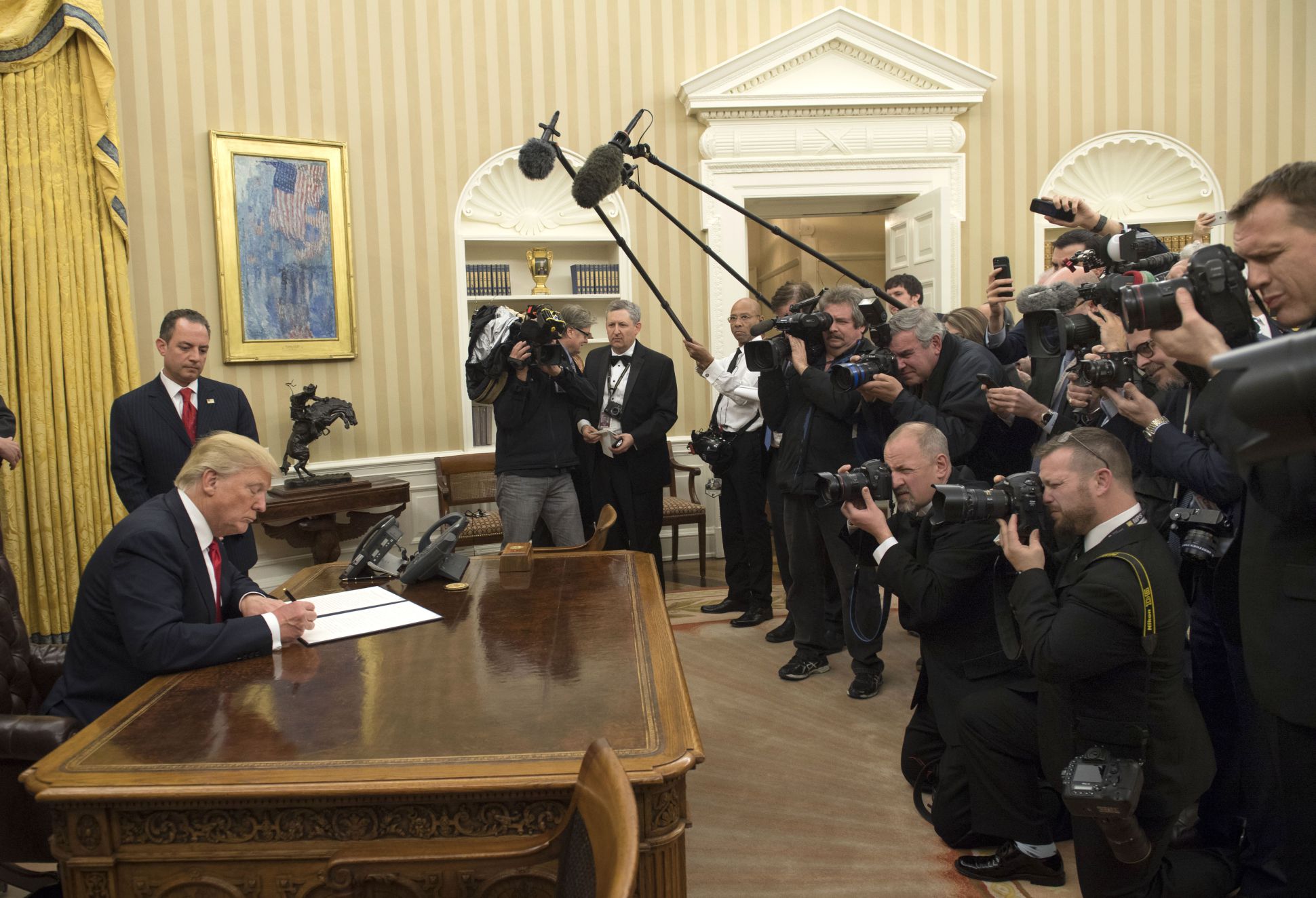
Blog
Read Daniel E. Straus’ blog to learn about healthcare, philanthropy, employee relations, and more.
Free the Doctors: To Fix ACA, Trump Must Restore Physician Authority
Posted on: September 14, 2017
Source: Observer
Author: Daniel E. Straus
As talk swirls about repealing and replacing Obamacare, President Trump must train his focus on the fundamental error of the ACA, which is the shift in patient care decision-making away from frontline physicians and toward hospitals and insurance companies. Health insurance for everyone is important; however if it comes at the expense of providing quality healthcare to everyone, it is at best a pyrrhic victory. Hospitals are the most expensive and many times inefficient venue for the delivery of care and have contributed to rising costs while also failing to improve the quality of patient care.

WASHINGTON, DC – JANUARY 20: President Donald Trump signs his first executive order as president, ordering federal agencies to ease the burden of President Barack Obama’s Affordable Care Act January 20, 2017 in Washington, DC. (Photo by Kevin Dietsch – Pool/Getty Images)
The root of the problem lies in the Obama administration’s misplaced trust in “accountable care organizations” (ACO)—the integrated care organizations envisioned by the ACA to contract with the Federal government to reduce Medicare costs. For example, the current data from the Centers for Medicaid and Medicare Services (CMS) indicates that the ACA’s Pioneer ACO did indeed reduce Medicare costs—by approximately $700 million in 2014—but required a whopping expenditure of over $1 billion to generate those savings. After accounting for the 50 percent share of savings distributed to the ACOs by CMS, those entities lost more than $500 million.
Dr. Robert Kocher, a special assistant to President Obama, is correct in stating that the ACOs failed in their objectives because of the faulty assumption that hospitals and large medical systems were necessary ACO partners due to financing and infrastructure needs. Rather than help the ACOs achieve greater savings, the early data paints a picture suggesting that ACOs affiliated with large hospitals and academic medical centers performed worse than ACOs that were operated by smaller physician groups without substantial participation by hospital providers.
The reason for this is simple: large hospital institutions are often bloated bureaucracies that tend to favor referral of expensive procedures to their own facilities versus cheaper alternate forms of treatment. According to the most recent figures from the National Center for Health Statistics, over 32 percent of national health expenditures take place in a hospital setting, compared to less than 20 percent for physician and clinical services. And that figure is growing. In the hospital setting, patients often lose their trusted bond with their physician, who must answer to an institutional employer.
According to a September 2016 study by the Physicians Advocacy Institute, from 2012 to 2015, hospitals acquired 31,000 physician practices, a 50 percent increase. As hospitals have accelerated their acquisition of physician practices, healthcare decisions are increasingly being driven by hospitals’ self-interested economic incentives, in particular ACA-enabled diagnosis-related group (“DRG”) payments and “bundled payments.” The latter have correctly been identified in a September 29, 2016 letter to CMS by Secretary of HHS Nominee Tom Price and other members of Congress as “commandeer[ing] clinical decision making” with unknown impacts with regard to quality of care and cost-savings. Hospitals have simply been granted too much authority to order tests and procedures without regard to improved outcomes.
